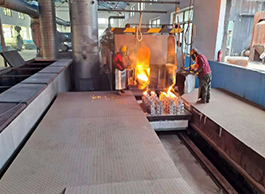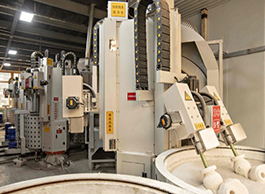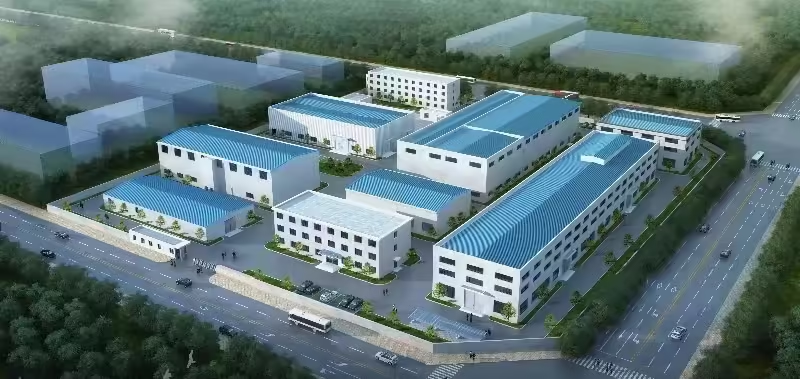Alloy Steel Castings: A Comprehensive Guide to Material, Process, and Applications
جدول المحتويات
مقدمة

سبائك الصلب المسبوكة are metal components produced by pouring molten alloy steel into molds, forming parts with high strength, durability, and wear resistance. By modifying the base composition of carbon steel with elements like chromium, nickel, or molybdenum, alloy steel offers tailored properties for demanding industrial applications.
What Makes سبائك الصلب المسبوكة Important?
They play a vital role in modern engineering, providing superior performance where ordinary carbon steels fail—such as in heavy machinery, mining equipment, power generation, and transportation.
Understanding the Basics of سبائك الصلب المسبوكة
The Concept of Alloy Steel
Alloy steel is steel combined with one or more alloying elements (Cr, Ni, Mo, Mn, V, Si, etc.) to enhance its mechanical and chemical properties.
These additions alter the steel’s internal structure, improving strength, toughness, corrosion resistance, and temperature stability.
How Alloy Steel Differs from Carbon Steel
While carbon steel relies mainly on carbon content for strength, alloy steel depends on the synergy between multiple elements.
As a result, alloy steel castings can achieve higher performance under stress, wear, or heat conditions compared to carbon steel castings.
أنواع سبائك الصلب المسبوكة

Low-Alloy Steel Castings
Contain small amounts of alloying elements (typically <5%). They balance cost and performance, offering good strength and toughness for general engineering applications.
High-Alloy Steel Castings
Feature higher concentrations of alloying elements, such as chromium and nickel, delivering enhanced corrosion and heat resistance. Commonly used in marine and chemical environments.
Special-Purpose Alloy Castings
Designed for specific performance needs—such as wear-resistant, heat-resistant, or cryogenic steels—used in mining, energy, and aerospace sectors.
Alloying Elements and Their Effects
| عنصر | Function | الفائدة الرئيسية |
|---|---|---|
| الكروم (Cr) | Increases hardness and corrosion resistance | Wear & rust prevention |
| النيكل (Ni) | Improves toughness and impact resistance | Enhanced ductility |
| الموليبدينوم (Mo) | Boosts high-temperature strength | Heat performance |
| Vanadium (V) | Refines grain structure | Increased strength |
| السيليكون (Si) | Enhances oxidation resistance | Surface stability |
These elements work together to create microstructures that balance strength, toughness, and durability in alloy steel castings.
Manufacturing Process of سبائك الصلب المسبوكة

Melting and Refining
The process starts by melting raw materials in an electric arc or induction furnace. Refining techniques like AOD or VOD remove impurities and control composition.
Molding and Pouring
Sand or 3D-printed molds shape the liquid metal. Precise temperature and flow control ensure uniform solidification and minimal defects.
المعالجة الحرارية
Post-casting heat treatment—such as quenching and tempering—adjusts the hardness and ductility. It transforms the internal structure to achieve target mechanical properties.
Machining and Inspection
Machining ensures dimensional accuracy, while non-destructive testing (UT, RT, PT) confirms internal quality and defect-free casting integrity.
Key Properties of سبائك الصلب المسبوكة
Mechanical Strength
Alloy steel castings offer superior tensile and yield strength, ideal for components under high stress.
Toughness and Ductility
They retain impact resistance even in low temperatures or heavy-load environments.
Corrosion and Wear Resistance
Chromium and molybdenum additions provide enhanced surface protection against oxidation, abrasion, and chemical attack.
Comparison: سبائك الصلب المسبوكة vs Carbon Steel Castings
| ملكية | صب الفولاذ السبائكي | صب الفولاذ الكربوني |
|---|---|---|
| قوة | Higher, customizable | معتدل |
| مقاومة التآكل | ممتاز | محدود |
| Heat Resistance | عالي | معتدل |
| يكلف | Higher (due to alloy elements) | أدنى |
| التطبيقات | Heavy-duty, specialized | General-purpose |
Choosing between alloy and carbon steel castings depends on the balance of performance requirements, cost, and environmental conditions.
Common Applications of سبائك الصلب المسبوكة
Industrial Equipment
Used in turbines, valve bodies, pump casings, and pressure vessels where strength and heat resistance are essential.
Mining and Construction
Wear-resistant castings for crushers, mills, and excavators.
Transportation and Marine
Components like gears, axles, and propellers that endure stress and vibration.
Energy and Power Generation
Turbine housings, boiler parts, and fittings exposed to high temperature and pressure.
Quality Standards and Certification
Common standards for alloy steel castings include ASTM A148, ASTM A217, EN 10293, and ISO 3755.
Manufacturers typically implement ايزو 9001 quality management systems, ensuring traceability, mechanical property verification, and material certification.
Innovations and Future Trends in سبائك الصلب المسبوكة

Smart and Digital Foundries
Integration of AI, sensors, and digital twins enables real-time quality monitoring and predictive maintenance.
Sustainable Manufacturing
Use of recycled steel, energy-efficient furnaces, and low-emission casting processes support green manufacturing.
Computational Alloy Design
Machine learning models and CALPHAD simulations are redefining alloy composition optimization, accelerating material innovation.
خاتمة
Alloy Steel Castings stand at the intersection of material science and industrial innovation. By combining multiple alloying elements and advanced manufacturing methods, they deliver unmatched strength, reliability, and adaptability. As digital foundries and sustainable metallurgy evolve, alloy steel will continue to shape the backbone of next-generation engineering and manufacturing.
الأسئلة الشائعة
ما هي سبائك الصلب المسبوكة تستخدم ل؟
They’re used in applications that require strength, wear resistance, or heat tolerance—such as turbines, pumps, and mining parts.
نكون سبائك الصلب المسبوكة better than Carbon Steel?
Yes, for high-performance environments. Alloy steels outperform carbon steels in strength, durability, and corrosion resistance, though they come at a higher cost.
يستطيع سبائك الصلب المسبوكة rust?
While not immune, properly alloyed and treated steels (especially with chromium) resist rust far better than plain carbon steels.
How are سبائك الصلب المسبوكة heat-treated?
They typically undergo quenching and tempering to achieve the desired hardness and toughness balance.
What’s the difference between cast and forged alloy steel?
Cast alloy steel is melted and poured into molds—ideal for complex shapes. Forged steel is deformed under pressure—better for uniform grain and higher fatigue strength.
How do I choose the right alloy for my casting?
Consider the environment (temperature, corrosion exposure, wear) and required mechanical performance, then select an alloy accordingly.
ابقى على اتصال معنا

شكرًا لقراءتكم! نأمل أن تكون هذه المدونة قد زودتكم بمعلومات قيّمة وإلهام حول أسقف الألواح الصوتية. إذا أعجبكم المحتوى وترغبون في البقاء على اطلاع بأحدث الصيحات والنصائح والتحديثات من وراء الكواليس، يسعدنا التواصل معكم عبر وسائل التواصل الاجتماعي.
📘 تابعونا على الفيسبوك: شركة شنغهاي لييروو الصناعية التجارية المحدودة
انضم إلى مجتمعنا المتنامي حيث نشارك نصائح الخبراء وتسليط الضوء على المنتجات والمناقشات التفاعلية مع المحترفين وعشاق التصميم من جميع أنحاء العالم.
دعونا نواصل المحادثة - نراكم هناك!
فئات المنتجات
- أجزاء الصمامات
- أجزاء مضخة المياه
- أجزاء صندوق المحمل
- أجزاء الصب بالقالب
- منتجات مضخات الفولاذ المقاوم للصدأ
- منتجات مضخات الحديد الزهر
- قطع غيار الصمامات لاستخدام السيارات
- قطع غيار السيارات
- أجزاء الصمامات للاستخدام المدني
- قطع غيار مضخة التفريغ KF

